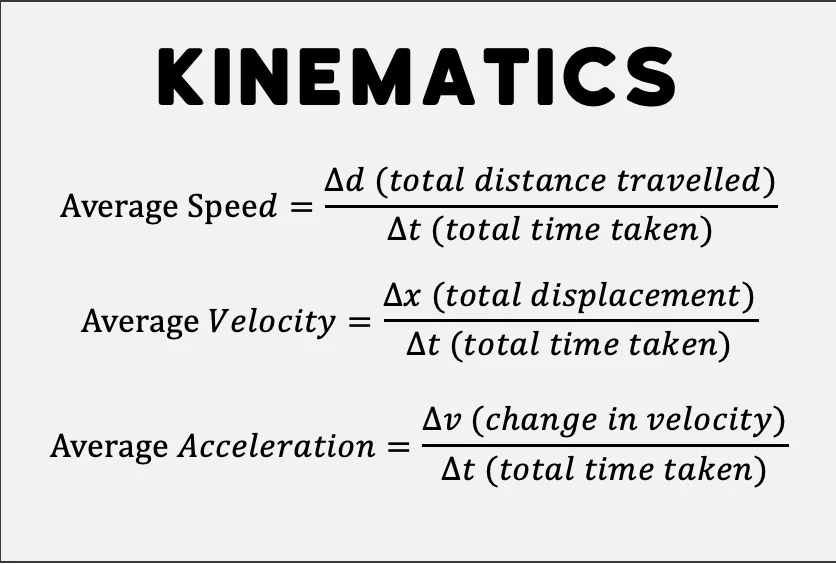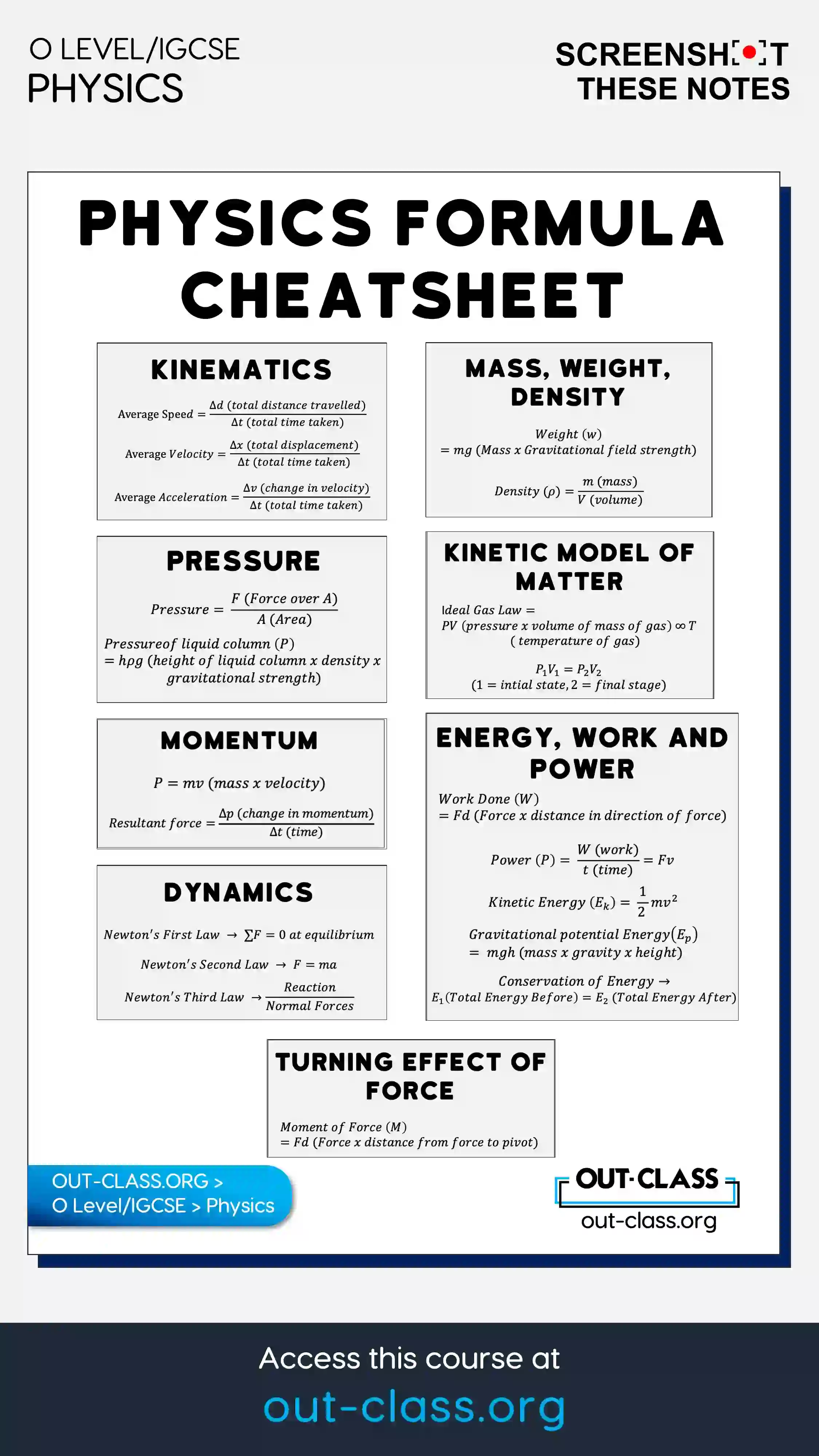Embarking on your IGCSE and O Level Physics journey can feel like navigating a maze of complex calculations. With so many formulas in the syllabus, it can get confusing to figure out what’s what when you’re attempting an exam. Out-Class has prepared this O Level and IGCSE Physics formula equation sheet which covers some of the more essential Physics formulas and also guides you on how to use them!

Cambridge O Level and IGCSE Physics Formula Sheet 2024
Instead of covering O Level and IGCSE Physics all formulas, our IGCSE and O Level Physics equation cheat sheet focuses on chapters included in the theme of Motion, Forces and Energy.
The formula sheet includes:
Kinematics
These are quite straightforward. However, O Level and IGCSE students often end up confusing speed and velocity.
Speed is the change in distance per unit time, whereas velocity is the change in displacement per unit time. Recall that displacement is measured with a direction. If you are confused about the difference between the two, we encourage you to revise using the book or refer to our Out-Class’s curated Physics crash course.
Mass, Weight and Density

Weight
Gravitational Field Strength = Gravitational Force / Mass
In simple words, gravitational field strength, g, is the force acting per unit mass. The formula above can also be written as:
g = Weight / Mass
(recall that weight is simply the gravitational force acting per unit mass).
We can rearrange the above formula to get:
W = mg
This form is used often to calculate the weight of an object given its mass m and the gravitational field strength g of the planet. Keep in mind that mass is independent of gravity, whereas the weight of an object can vary depending on how strong the gravitational field strength g is!
Density
Density = Mass / Volume
*Tip: In the O Level and IGCSE Physics exam, you may be asked to calculate the mass of a liquid given its density and volume. Rearranging the above formula can help you tackle such questions.
Forces
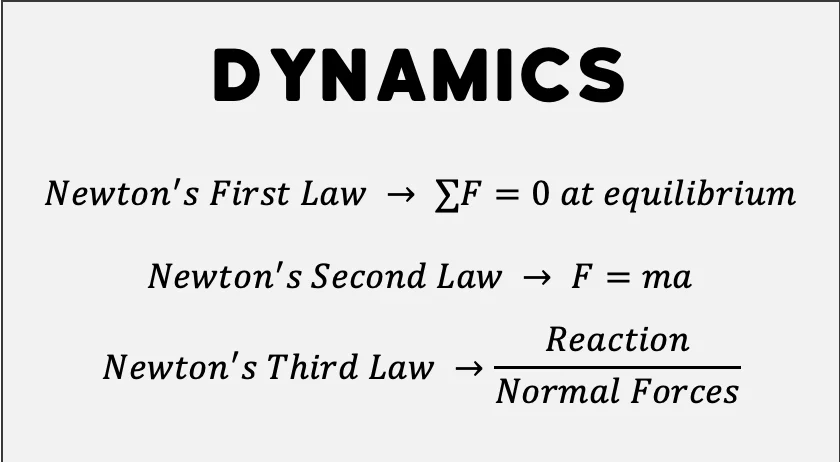
This is one of the most important formulas in the Cambridge O Level and IGCSE Physics formula sheet. It defines Newton’s Second Law of Motion.
Often, you may be asked to calculate the acceleration of objects and this can be computed by rearranging the formula to get:
a = F / m
Springs
Spring Constant = Force / Extension
k = F / x
*Note: Spring constant is a measure of how stiff a spring is. A higher k means that more force is required to create the same amount of extension (and hence, the spring is stiffer).
Momentum
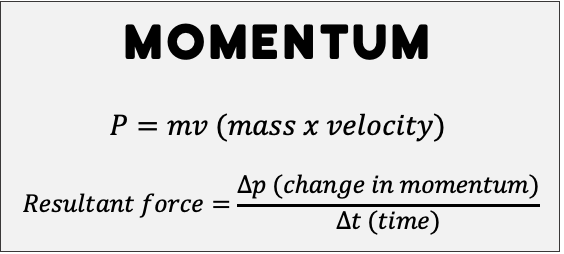
The resultant force formula is often overlooked. That is when you find the average resultant force acting on an object by dividing the change in momentum by the time during which it occurred. Neat!
Energy, Work and Power
There are two types of energies you should be familiar with to compute O Level and IGCSE Physics answers with ease:
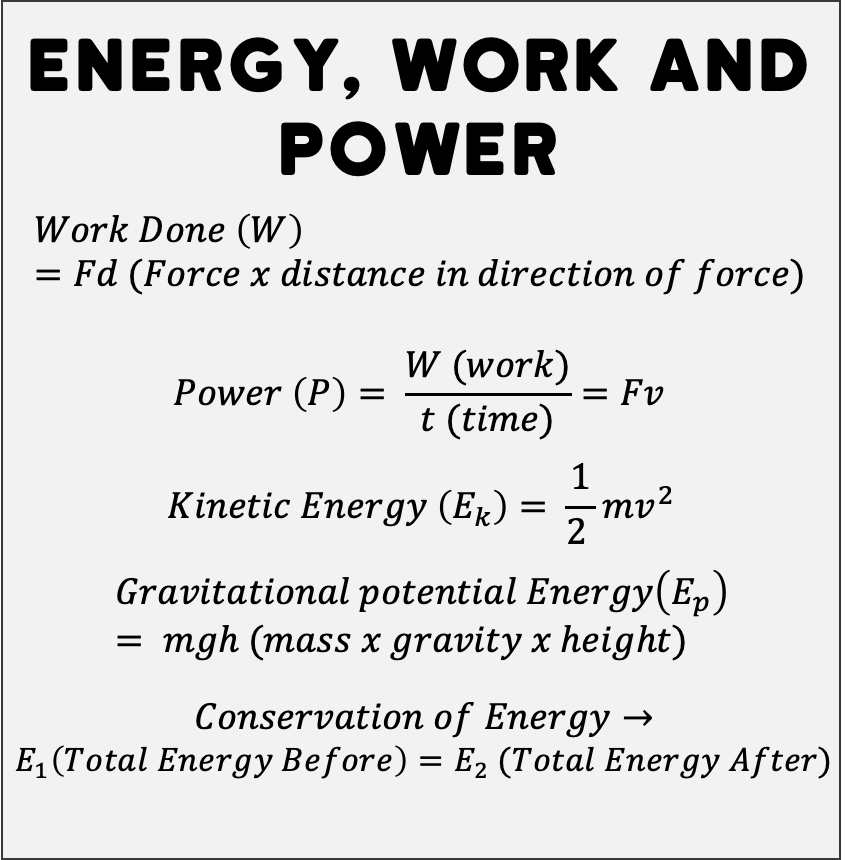
One way that these IGCSE and O Level Physics formulas are used interchangeably is when we consider conversions between kinetic and potential energy. Such examples are observed in the case of falling objects or pendulums, where gravitational potential energy (an object held at a height) can be converted into kinetic energy (due to its motion) as the object falls. For such calculations, simply equate the formulas as follows and proceed as needed:
Kinetic Energy = Gravitational Potential Energy
This O Level and IGCSE Physics equation formula list would be incomplete if we don’t talk about the formula for work done:
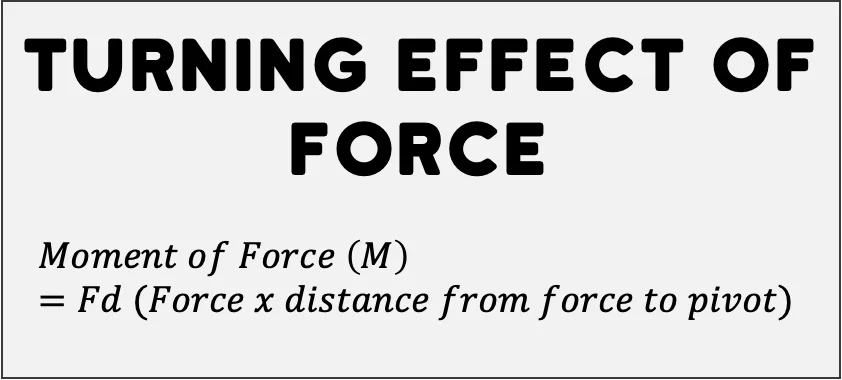
Some O Level and IGCSE Physics students make a conceptual mistake when using this otherwise straightforward formula of turning effect of force. Suppose you are holding a box and walking around. In this case, the work done on the box is 0, since the direction of the force on the box is upwards (produced by your hands), whereas the box is not moving in the vertical direction, it is only moving horizontally. Hence, the “distance moved in the direction of the force” is 0, which makes the work done 0 too!
Power
Power can be thought of as the rate of doing work. IGCSE and O Level Physics questions usually involve rearrangement of the above definition. For example, you may be asked to find out the energy dissipated by a light bulb with a power rating of 5W if it was left on for 1 minute. The answer is 5W 60s = 300J
We can also compute the efficiency of a system or device using:
% Efficiency = Useful Energy Output/Total Energy Input = Useful Power Output/Total Power Input
Pressure
There are two O Level and IGCSE Physics formulas for pressure that you need to remember.
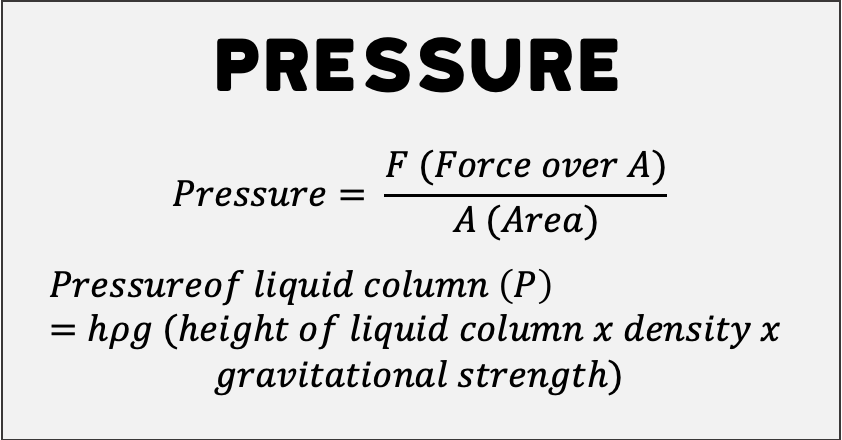
While the above formula for pressure is simple, you should be acquainted with the following formula for pressure in liquids. It relates the change in pressure to the density of the fluid, the gravitational field strength, and the height difference.
In simple words, the pressure only depends on the height of the water column, provided that the liquid being used is the same (same density). As such, a larger cross-sectional area makes no difference to the amount of pressure exerted by a liquid. This concept is often tested in the MCQ section of O Level Physics Paper 1.
Conclusion
We certainly hope that our Physics O Level and IGCSE Equation Formula sheet helped explain the key formulas for Motion, Forces and Energy. The best way to get comfortable with them is by attempting past papers. With consistent practice, you’ll know when to use which formula!
However, if you’re still confused about any of them, our online crash course goes over multiple use cases for each. Check it out here!
